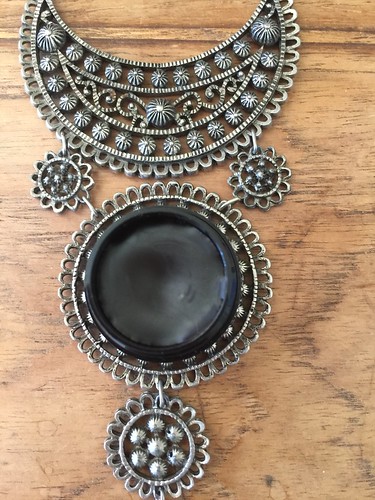Z'bad

Z'bad, Zebad or Zubad, Zabād, Sinnawr al-Zabād simply means civet in Arabic, and is the origin of this word in Western world (Civet, civette, zibet and zibetum are some of its Western spellings). In the Arab world, civet paste is still used today in its raw form, as an aphrodisiac, and a hair grooming product: to smooth and scent eyebrows, moustache and beard, as well as treatment for hair loss and various other folkloric uses. If you understand Arabic, this video explains how it is used also. But Z'bad is also a perfume type, just as "White Musk" is a type of fragrance nowadays, and not just one literal ingredient. Although civet is the key ingredient that gives it its character, it is not the only one. Z'bad was used to protect against the evil eye, so it is a magical concoction as well as an aphrodisiac.
I first heard about Z'bad from Dan Riegler (Apothecary's Garden), who have found it in an old perfumery and apothecary in the midst of a Souk in Yemen. I was both intrigued and hesitant about purchasing it because it was a bit unclear to me at the time what this was - aged civet paste or an authentic Yemeni perfume, and since I don't use the former in my creations, it seemed superfluous to make such a purchase.
When I stumbled upon this article about The Painted House and heard from Ayelet Bar-Meir that the Yemeni artist used this mysterious perfume and that it was a strong memory she left with her children and grand children, I knew I had to try it for myself. Dan has kindly gifted me with two jars, and I'm so thankful he did. The Z'bad that Dan found in Yemen is indeed not just aged civet but a full perfume, a solid paste of civet mingled with camphor, spices and that has aged and mellowed for decades.
In Dan's own words, "Z'bad is a potent traditional Yemenite Civet based perfume mix, used for hundreds of years among the Yemenite Jews, but abandoned by younger generations, Z'bad, or Zabad, doubled as a prophylactic against the evil eye, which may also be a contributing factor to its decline in popularity(...)". Which fits right in with what I read about Afia's use of it in that article, and what Ayelet has spoken about.
I received the Z'bad while I was still in Canada, and made great efforts (over the course of four weeks!), to not open the jar till I entered The Painted House. I wanted to have a very specific place association and emotional memory with it. And trying it on first at the house of a woman who lived with similar fragrances and put great care to incorporate them into her daily rituals. It was at first surprisingly fresh, and surprisingly familiar: a burst of camphor and spearmint emerges from the jar as I first uncorked it and smeared some of the dense, rich salve onto the back of my hand. It had strong banknotes of balsams and civet, but nevertheless there was a surprisingly green, minty, camphoreous freshness to it for the first few minutes. It was a tad medicinal, but not as medicinal as Tiger Balm (which is what the uninitiated nose might dismiss it as at first sniff). There are also earthy qualities, almost musty-dusty, which makes me wonder if there isn't some patchouli oil in there as well, or more likely - a kind of infusion of the dried leaves. I have very little knowledge of how these traditional perfumes I made, but from the little I know about Arab aesthetics, just as the oud oil is used as the "base oil" for other ingredients, in this case it is not unlikely that the civet paste was infused with several resins, spices and herbs to create this rich perfume preparation. I'm also smelling cedar, which gives it a rather pervasive dryness in the opening hour of so on the skin. Perhaps even a hint of myrrh or opoponax. There are no flowers to be smelled in this, but it is unnecessary. There is so much indole in the civet that it really blooms on the skin, and develops into this luscious, purring animalic-balsamic presence for hours on end afterwards. It is not overmpoering at all, but simply becomes part of my skin.

In both its scent and consistency, Z'bad reminds me a lot of vintage Youth Dew solid perfume in a vintage necklace I have that is probably not that different in age. It seems like Z'bad was the inspiration for Youth Dew, as well as its predecessor Tabu. Both rely heavily on civet, and have a distinctively heavy-sweet-cloying-exotic character that is heavily inspired by the Orient. To Westerners that never smelled the original, these two must have been earth-shuddering at the time, and immensely original. And they are in their own rights. But they wouldn't be around without this Arabian unguent.
Likewise, the evocative packaging and thicker liquid in the Western Orientals - Tabu, Youth Dew, Opium, Obsession and Shalimar - is created in such way as to recreate the ritual of applying a thick paste to the eyebrows, nape of the neck and perhaps other unmentionable strategic spots. The richness of materials create a heavy veil of scent that is highly intimate, personal and also precious. It does not need to be applied in great quantity, and ironically - the economy in which is can be used is part of its luxury and appeal.

